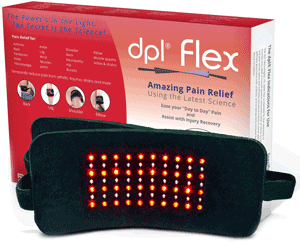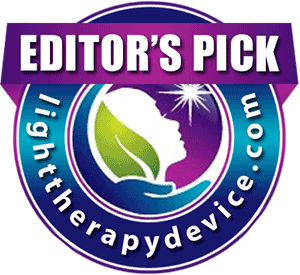Red light therapy is sometimes referred to as biostimulation, light therapy, low-level laser therapy or photonic stimulation. Unlike other wavelengths on the light spectrum, red light penetrates into the skin and causes many different beneficial biological and chemical changes. Although some may consider the treatment quackery, numerous scientific studies indicate red light therapy is amazingly effective.

Red Light Therapy Explained
The treatment typically involves a continuous red light emitted from a series of LED bulbs at a wavelength of around 635 nm. The light does not produce heat and is not uncomfortable. Some may experience a slight reddening of the treated area, which quickly subsides in a few hours after treatment. At this intensity, the light penetrates the skin up to 10 millimeters in depth. The body converts the light into energy and various metabolic processes begin. These processes include:
- Enhances blood circulation by triggering vessel linings to release nitric oxide, which dilates blood vessels
- More efficient delivery of oxygen and nutrients to the treated area and throughout the body
- Stimulates cellular mitochondria to increase intracellular energy production
- Stimulates genetic DNA/RNA synthesis for cell replication
- Encourages the development of new capillaries
- Stimulates collagen, elastin and fibrin production for the repair or restoration of tissues
- Decreases the potential for oxidative stress from free radicals
- Soothes inflammation and reduces swelling
Red Light Therapy Uses
- Cosmetic benefits – Red light therapy devices have proven to diminish the visible signs of aging. Treatments rejuvenate the skin through enhanced collagen and elastin production, which plumps skin naturally to diminish fine lines and wrinkles. Skin appears smoother and more even in color. Red light therapy is also helpful if dealing with hair loss. Blood circulation improves, which nourishes and stimulates hair follicles to produce stronger new hair. Treatments are appropriate for men or women and all skin types.
- Musculoskeletal health – As red light therapy stimulates the cells that comprise connective tissue, the technique is growing in popularity for treating patients suffering from rheumatoid arthritis. Following regular treatment, patients have less pain and morning stiffness along with improved function. By targeting free radicals and minimizing inflammation, joint damage is also decreased. Patients may receive treatments on any affected area of the body.
- Tissue repair – Studies indicate that red light and near-infrared wavelengths between 600 and 1,300 nm provide a non-invasive, non-chemical treatment, which promotes tissue repair and wound healing. Unlike laser treatments, light therapy does not cause tissue damage to encourage blood flow and healing. Red light therapy stimulates cell reproduction by increasing the production of fibroblasts, keratinocytes. Healing also occurs due to the arrival of white blood cell macrophages, mast cells and neutrophils.
- Reduces cancer treatment side effects – Research performed by NASA and the University of Alabama demonstrated how red light treatments successfully reduce the symptoms cancer patients often endure secondary to chemo or radiation therapy. Patients underwent treatment using a High Emissivity Aluminiferous Luminescent Substrate or HEALS device, which emitted red and near-infrared light wavelengths. Cancer patients were exposed to the light therapy for less than two minutes daily for two weeks. The study participants suffered no side effects. However, they did experience a reduction in the painful tissue damage associated with various cancer treatments. Red light therapy has also been used to treat slow-healing diabetic ulcers and severe burns.
- Depression and fatigue reduction – Routine exposure to red light therapy proves beneficial for individuals suffering from depression or fatigue. Once the light penetrates the skin on the face or inside a nostril, neurons increase neurotransmitter production, which elevates mood. Treatment recipients report feeling happier, more energized, self-confident and more positive. Social skills improve along with sensory awareness.
Some believe the correlation between red light therapy and mood enhancement has to do with Chinese medicine philosophies. Practitioners believe that energy travels throughout our body along chakra zones or meridian points. If for any reasons one of the pathways becomes obstructed, illness occurs. As light is a type of energy, which penetrates deep into tissues, treatments are thought to restore the pathways in a similar manner to acupuncture.
Although formerly only available through a physician, therapist or spa specialist, consumers now have the chance to enjoy the benefits of red light therapy at home. Red light therapy devices come in a variety of prices ranges and in all sizes, styles and designs to target any area of the body.



Does the Red Light Therapy aid in weight loss? What is the cost of a Red Light device?